Dilemma of Choosing the right innovation
As we set afoot in the last few decades, world of business have started witnessing a plethora of cases in which new type of companies, often technology enabled (later known as Digital natives), dethrone incumbents to irrelevance. These new age players disrupted marketplace through innovative business models and at times created a new industry. And what was more troubling for traditional players was that, the earlier notion of industry barrier seemingly appeared non-existent. They are faster, cheaper and more customer friendly in their approach. A weaning brand loyalty & frequent onslaught from these disrupters , forced traditional business organizations re-imagine their entire value proposition along with the value network that they work in. They must look at innovation in a more strategic way to safeguard themselves from a Kodak moment for their business.
While the challenge is clear and ubiquitous, the approach has always been dilemmatic. Winning capabilities built on years of improvisation around its resources, processes and values, which were the key to their competitiveness and very much engraved in the genetics of the traditional companies are suddenly facing an impending threat of irrelevance. A large-scale transformation with an aim to replicate new age tech players is risky and, might jeopardize a bulk of existing revenue stream. At the same time by not making the radical changes might leave them at the mercy of obsolesce. A recent research from MIT Sloan says that enterprises would spend 2 Trillion in technology enabled transformation out of which 70% of such transformations won’t see the light of success.
An appropriate way to deal with such a dilemma would be a strategy of prudent Innovation. An innovation that not only safeguard existing business, but also hedge the organization from a future threat of disruption. Innovation must not be looked at in an all-encompassing manner, instead intent of innovation should be classified based on (at times) radically different outcomes as below.
Classification of Innovation types:
1.The first set of innovations would focus keenly on Sustaining market leadership in existing business. Continuous Process Improvement looks at opportunities to improve the existing business processes while Business Process Re-Innovations looks at ways to re-imagine the business processes. Product or Service Innovations focuses on the products or Services for the end customers but within the same Business model.
2. Second set of Innovations (classified as Strategic Innovation)on the other hand are aimed at future business. These are radical in nature and often look at new, unproven, and radical different ways to answer few core strategic questions aimed at
(i)Identifying the customer base which is at a very nascent and very different than the core customer segment of today but would evolve to form one core target segment of the future, or (ii)Re-conceptualizing of customer value proposition, or (iii)Redesigning the value chain that delivers value to end customers etc.
These innovation types are not only different in their intended outcome but also radically different in their approach.
Sustaining innovations are efficiency built on the paradigm of Management by Measurement. On the other hand, Strategic Innovation requires a Management of Creativity with selective experiments to envision future business, requiring a radical different approach to mindset, culture, and approaches to management style. The cost, risk and timeline associated with such innovations also differ significantly. Depicting below is a snippet from Prof Vijay Govindarajan’s publishing on Innovation, to illustrate the above.

Hence, even though there can be certain overlaps, organizations must avoid the tendency to have both these rolled in to one common Innovation department. Both these genetically different set ups should be independent of each other. While both sustaining and Strategic innovations must be pursued together, but the degree of focus on each type can be driven by the strategic outlook of the organization.




An interesting read, compels us to rethink on our unilateral approach towards innovation.